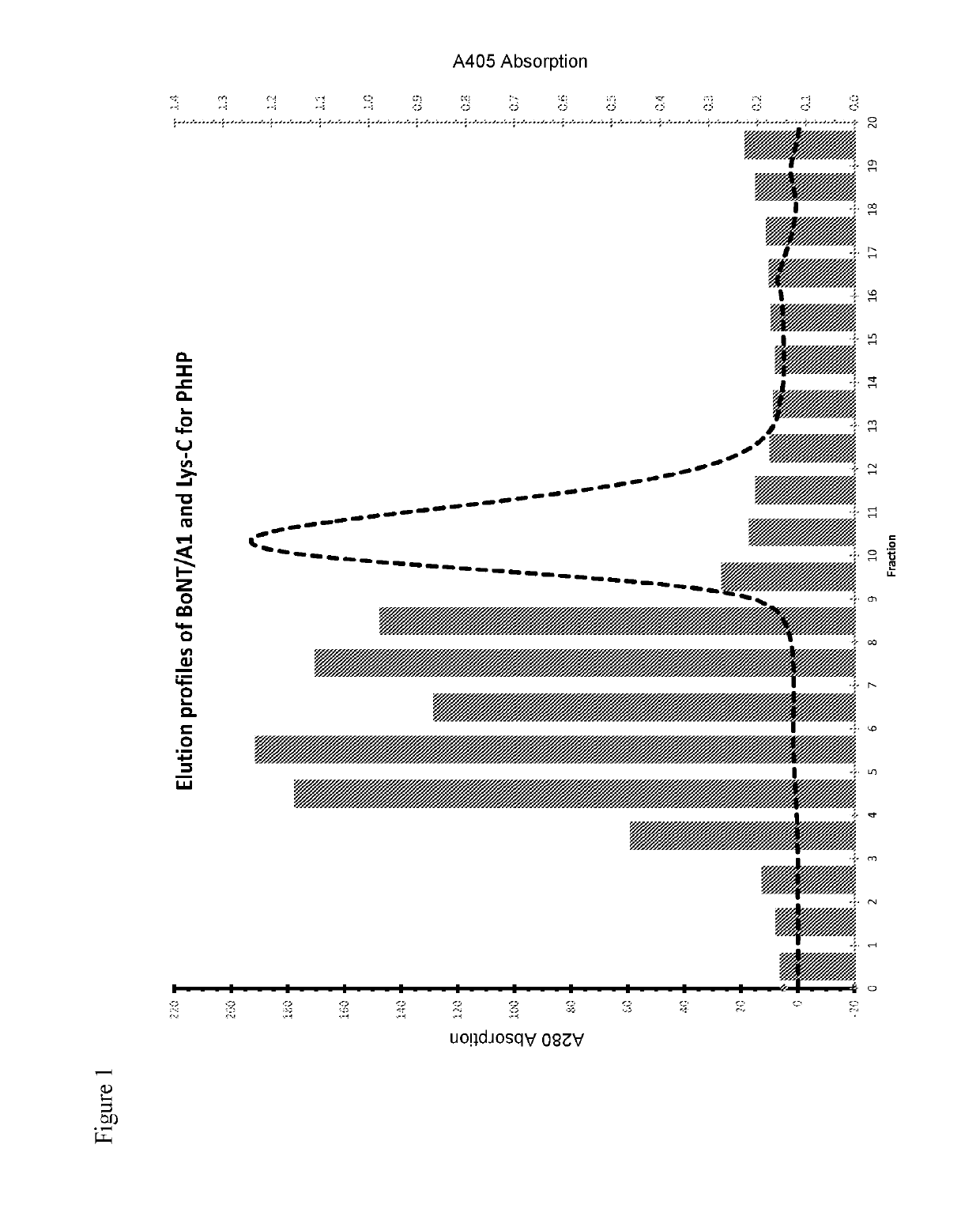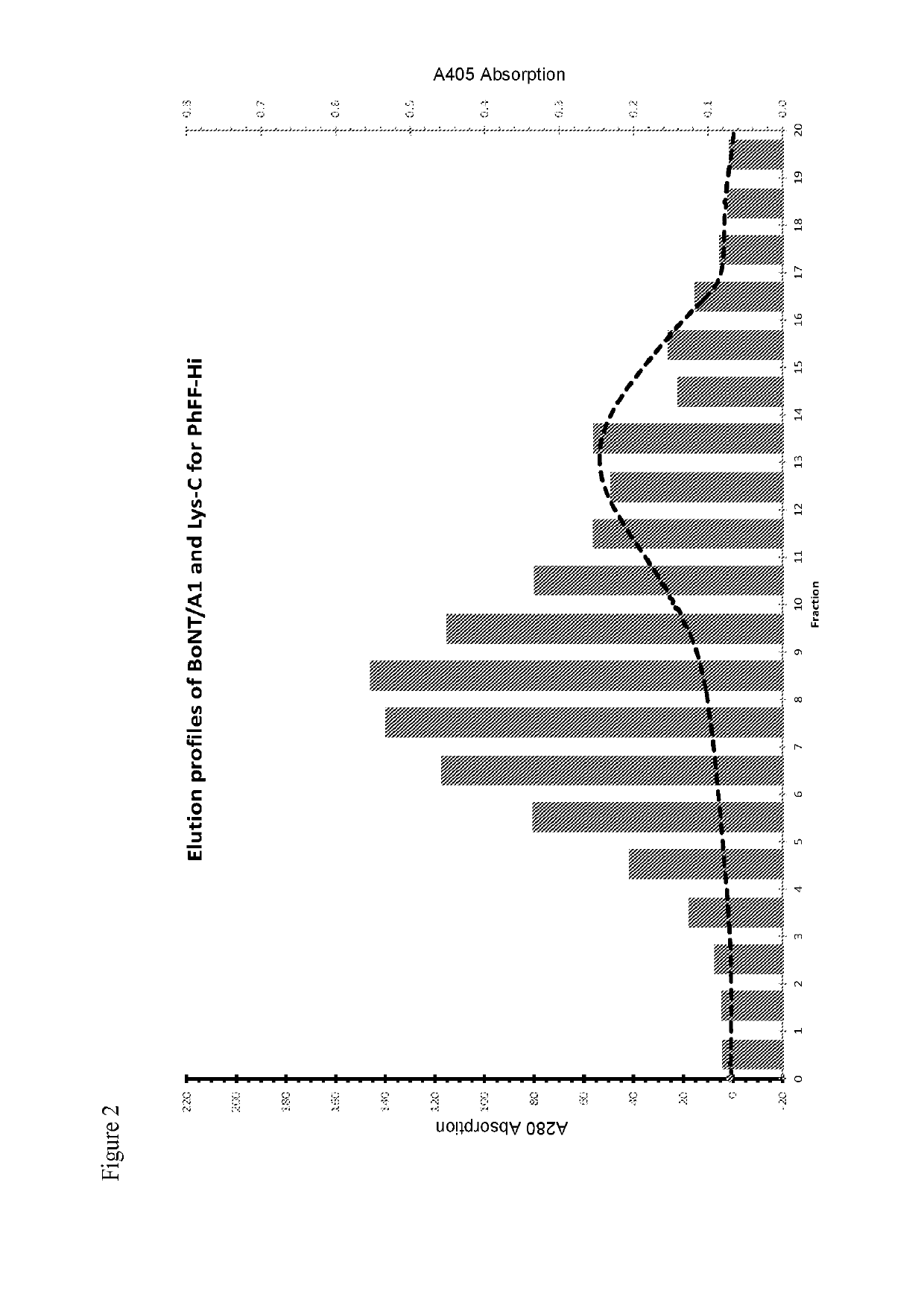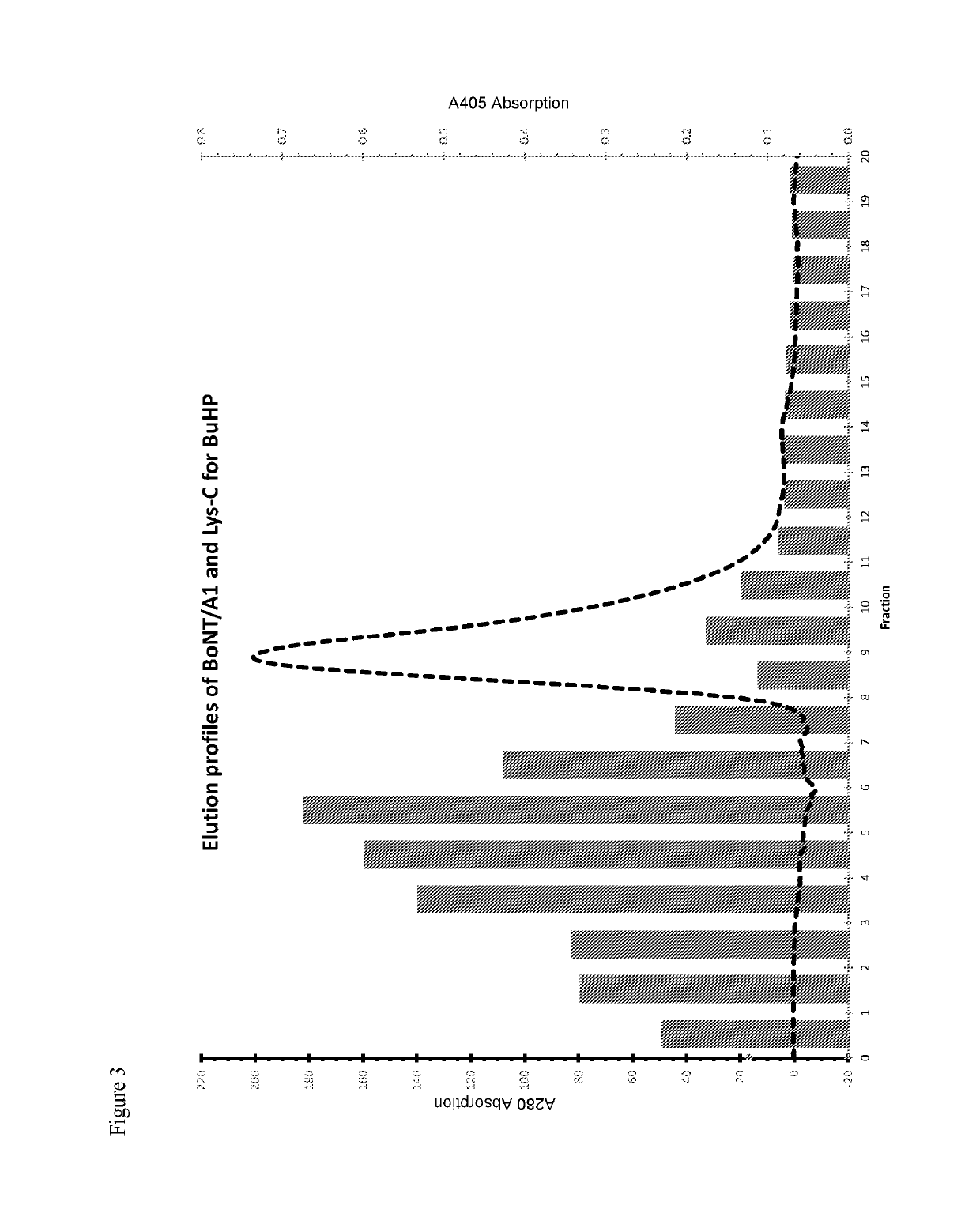Manufacture of di-chain recombinant Clostridium botulinum neurotoxins using Lys-C and a hydrophobic surface
a technology of clostridium botulinum and di-chain recombinant, which is applied in the field of recombinant clostridium botulinum (c. botulinum) neurotoxins, can solve the problem and achieves the effect of reducing the potency of the active di-chain bont/a protein produced
- Summary
- Abstract
- Description
- Claims
- Application Information
AI Technical Summary
Benefits of technology
Problems solved by technology
Method used
Image
Examples
example 1
Culturing of Host and Expression of Soluble rBoNT / A Protein
[0222]A single colony of BoNT / A transformed in BLR (DE3) cells is used to inoculate a 250 mL conical flask containing 100 mL modified Terrific Broth (mTB) supplemented with 0.2% glucosamine and 30 μg / mL kanamycin. This method would be equally applicable when using a Microbank bead or glycerol stock (10-100 μL) to inoculate the flask.
[0223]The flask is incubated for 16 hours at 37° C. with 250 RPM shaking. 10 mL of this starter culture is used to inoculate 2 L conical flasks each containing 1 L supplemented with 0.2% glucosamine and 30 μg / mL kanamycin. Cells are grown at 37° C. for 2 hours at 225 RPM until an OD600 of 0.5 is reached. At this point, the culture temperature is dropped to 16° C. After 1 hour, the cells are induced to express BoNT / A by addition of 1 mM IPTG for 20 hours. Cells are harvested by centrifugation for 20 min at 4° C., weighed and then stored at −20° C.
example 2
Extraction of BoNT / A Protein from Host and Analysis of Expression Level
[0224]Expression cell pastes of rBoNT / A are thawed at room temperature and resuspended by pipetting in 3 mL of Tris-NaCl re-suspension buffer per gram of cells supplemented with 10 μL benzonase. Cells are lysed by sonication at 100 W−10×30 s on +45 s off. The lysate is centrifuged at 4000×g for 1 h at 4° C. to obtain the soluble rBoNT / A in the supernatant.
Bradford Assay to Determine Total Protein Concentration of Prepared Lysates
[0225]A sample (50 μL) of either diluted rBoNT / A lysate or BSA standard is added to 1 mL disposable cuvettes. 450 μL of Coomassie Bradford Assay reagent is added to each cuvette and allowed to incubate at room temperature for 10 minutes before reading A600. The values obtained for the BSA standards are used to determine the amount of protein in the lysate samples.
Semi-Quantitative Western Blot Analysis
[0226]A commercial sample of BoNT / A protein purchased from Metabiologics is used to make...
example 3
Activation of Botulinum Neurotoxin A (BoNT / A) by Lys-C
[0227]Single chain recombinant BoNT / A1 (0.5 mg / mL) dissolved in buffer (50 mM Tris / HCl pH 8.0, 125 mM NaCl) was proteolytically activated by Lys-C(at 1:500 to 1:2500 enzyme:substrate ratio) at 37° C. or 4° C., over a period of 2-20 hr, before the reaction was inhibited with 0.4 μM AEBSF (4-(2-Aminoethyl) benzenesulfonyl fluoride hydrochloride), a specific serine protease inhibitor. This yields the mature di-chain form of BoNT / A1, where the heavy chain is linked to the light chain by a single disulphide bond (data not shown).
[0228]The cleavage site was determined to be identical to the endogenous protein by N-terminal sequencing and mass spectrometry, confirming Lys-C to be the activating enzyme of choice (data not shown).
[0229]Endoproteinase Lys-C cleavage tests demonstrated that Lys-C cleaved rBoNT / A1 at very low concentrations and remained active over a period of days (data not shown).
PUM
| Property | Measurement | Unit |
|---|---|---|
| molecular mass | aaaaa | aaaaa |
| molecular mass | aaaaa | aaaaa |
| concentration | aaaaa | aaaaa |
Abstract
Description
Claims
Application Information
 Login to View More
Login to View More - R&D
- Intellectual Property
- Life Sciences
- Materials
- Tech Scout
- Unparalleled Data Quality
- Higher Quality Content
- 60% Fewer Hallucinations
Browse by: Latest US Patents, China's latest patents, Technical Efficacy Thesaurus, Application Domain, Technology Topic, Popular Technical Reports.
© 2025 PatSnap. All rights reserved.Legal|Privacy policy|Modern Slavery Act Transparency Statement|Sitemap|About US| Contact US: help@patsnap.com



